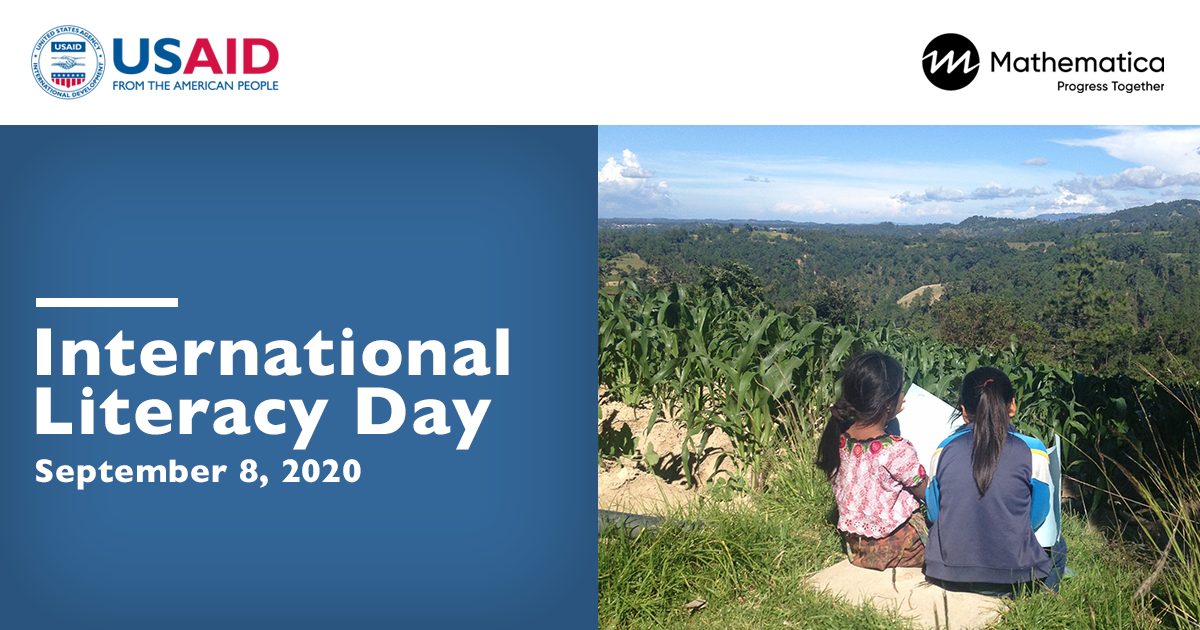For eight years, Mathematica has generated rigorous evidence on what works to improve early-grade reading outcomes for the most vulnerable populations in Latin America and the Caribbean (LAC). Funded by the U.S. Agency for International Development (USAID), the LAC Reads project is designed to help ministries of education and other education stakeholders improve early literacy programs in the LAC region by increasing the availability of, demand for, and capacity to use evidence-based, cost-effective practices.
Working with USAID, we conducted impact evaluations of four promising reading interventions in Guatemala, Honduras, Peru, and Nicaragua. All the impact evaluations used a random assignment design and included a qualitative component to understand and learn from the implementation of the interventions in the region. Collectively, these evaluations showed evidence for promising strategies to improve early-grade reading achievement. In most, we found small to moderate positive impacts, although not for all components of the interventions or for all sites.
In commemoration of International Literacy Day 2020, and as we finalize our reports and share our findings over the remaining six months of the project, here are some key lessons from LAC Reads. These lessons highlight not only the importance of this unique approach but also how other international literacy efforts could benefit from this exciting research.
Teacher training and coaching interventions can improve reading outcomes among children in low-resource contexts.
Teacher training and coaching programs that are substantively different from business-as-usual pre-service and in-service training can help improve children’s reading skills. For example, in the Ucayali region of the Peruvian Amazon, 2nd-grade students in schools that participated in Amazonía Lee outperformed their peers on a range of outcomes, including decoding, oral reading fluency, and reading comprehension. Similarly, in the Andes region of Peru, the Leer Juntos, Aprender Juntos teacher training and coaching improved 3rd-grade students’ accurate decoding and oral reading fluency, as well as early-reading comprehension skills. In Honduras, teacher training on using end-of-grade and formative assessments, along with classroom improvement plans, had a positive impact on children’s reading test scores. In small communities in Nicaragua, the Espacios para Crecer program, which trained teachers to provide after-school enrichment activities to at-risk children up to 3rd grade, had a positive impact on children’s reading fluency and reading comprehension.
Identifying service gaps is key to building actionable evidence.
Using situational analysis or needs assessments to identify service gaps and target interventions is important, particularly if the program intervention is meant to improve learning over and above existing efforts.
For instance, we found that the Leer Juntos, Aprender Juntos teacher training and coaching had positive impacts on some reading outcomes in Peru but not in Guatemala. In Peru, the approach promoted by the Ministry of Education (known as communicative–textual) and widely used in local schools emphasizes holistic communication and the use of various types of text to promote literacy. This instructional approach to early-grade reading was clearly distinct from the Leer Juntos, Aprender Juntos approach to reading instruction, which focuses on foundational reading skills in multilingual contexts, monitors students’ mastery of those skills, and promotes students’ access to and use of reading materials in the mother tongue. Conversely, in Guatemala, the Ministry of Education approach to early-grade reading instruction (known as Leamos Juntos) emphasizes instruction on foundational reading skills to develop reading fluency and reading comprehension; in this case, the approach prevalent in schools and the tested intervention approach were not meaningfully different.
Similarly, we found positive impacts of Amazonía Lee on students’ reading outcomes in only one of the two districts where the intervention was implemented. In this case, Amazonía Lee made a difference in Ucayali, where no in-service training opportunities were available for teachers, but it did not improve reading outcomes in San Martin, where a relatively comparable in-service training and coaching program was available for teachers.
Fitting the approach to the context supports efficient and effective program implementation.
The evaluations of EducAcción’s Promising Reading Intervention in Honduras and the Espacios para Crecer in Nicaragua offered valuable lessons about targeting interventions to population subgroups for more efficient and effective program implementation. In Honduras, the teacher training intervention on using end-of-grade and formative assessments worked differently in urban and rural schools. End-of-grade assessments were more effective in urban schools, whereas formative assessments were more effective in rural schools. Differences in the roles and responsibilities of principals and teachers in urban and rural schools contributed to differences in the effectiveness of the intervention’s components.
Similarly, in Nicaragua, the evaluation found positive impacts on literacy skills in smaller communities, where the Espacios para Crecer after-school program improved decoding, reading fluency, and reading comprehension. The learning impacts were significant for children who were out of school at intake but not for children who were already enrolled in school. From this evaluation, we learned that focusing high quality after-school enrichment interventions on hard-to-reach children in small communities can be an effective way to help children achieve important reading milestones; we did not see the same effects for children in larger communities.
In-depth knowledge of local context and cultural sensitivity are critical to adapting programs for effective implementation.
The evaluations of Leer Juntos, Aprender Juntos in Peru and Guatemala, and Espacios para Crecer in Nicaragua revealed that it is important to assess the feasibility of implementing programs in specific contexts and to determine what adaptations might be necessary. Leer Juntos, Aprender Juntos had two major components: (1) in-school teacher training and coaching and (2) a community component to increase children’s opportunities to engage in reading beyond the school schedule. The community component was designed to be implemented by volunteers in the community who would donate their time to lead after-school reading activities with children. However, challenges with recruiting and retaining cadres of volunteers resulted in delays relative to the implementation of the in-school component. In addition, parent and child participation in the community activities was lower than expected. The community component did not have an impact on students’ learning above and beyond the in-school component. The low take-up of community activities in Peru and Guatemala because of local context barriers, as well as lower levels of participation from children in large communities in the Espacios para Crecer program in Nicaragua, might have constrained the effectiveness of these approaches.
As we continue to work with USAID to uncover additional insights from LAC Reads, we’re proud of how this project generated important evidence specific to the region on improving reading outcomes for children. We’re excited about what we've learned about what works and for whom in the in-school approaches and community interventions we tested. And we’re eager to share this expanded education evidence base for researchers, policymakers, educators, and people around the world, so they can use it to better support early learners, their teachers, and their communities.



